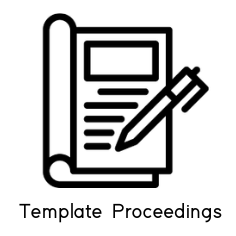The Effect of STEAM Learning and Scientific Attitude on Students' Creative Thinking Skills
DOI:
https://doi.org/10.29103/micoms.v3i.204Keywords:
STEAM, scientific, attitude, creative thinkingAbstract
Facing the development of 21st -century technology, students must be equipped with skills that help them become superior human resources, one of which is creative thinking skills. Creative thinking skills are the ability to analyze something based on data or information to generate new ideas in understanding something. One way to improve creative thinking skills is to train students to explore scientific attitudes and carry out learning that applies scientific activities such as STEAM learning (science, technology, engineering, art, and mathematics). This study uses a quantitative research method Pre-Experimental Design. The design used is the One Group Pretest-Postest Design. The instruments used were twin observations during STEAM learning to assess creative thinking skills and questionnaires to assess scientific attitudes. The test used is a simple regression test that produces the equation Y=3.51+1.21X. Test the hypothesis using the t-test which concludes that there is a significant influence of scientific attitude on the creative thinking skills of students who apply STEAM learning.
References
E. Griffin, P., & Care, Assessment And Teaching of 21st Century Skills: Methods and Approach. Dodrecht: Springer Business Media, 2015.
S. Zubaidah, “Mengenal 4C: Learning and Innovation Skills Untuk Menghadapi Era Revolusi Industri 4.0,” 2nd Sci. Educ. Natl. Conf., vol. 2, no. September, hal. 1–7, 2018.
H. Sakdiah, I. R. Lukman, dan M. Muliani, “Pelatihan Penggunaan Aplikasi Ispring Suite Dan Smart Apps Sebagai Media Pembelajaran Digital Bagi Guru Sd Di Lhokseumawe Pada Era New Normal,” J. Vokasi, vol. 6, no. 2, hal. 120, 2022, doi: 10.30811/vokasi.v6i2.3053.
P. R. Sasmita, H. Sakdiah, dan Z. Hartoyo, “Pengaruh Penerapan Model Pembelajaran Interactive Lecture Demonstrations (ILDs) Terhadap Kemampuan Pemahaman Konsep Fisika Siswa,” Silampari J. Pendidik. Ilmu Fis., vol. 2, no. 1, hal. 55–65, 2020, doi: 10.31540/sjpif.v2i1.931.
R. H. Mardhiyah, S. N. F. Aldriani, F. Chitta, dan M. R. Zulfikar, “Pentingnya Keterampilan Belajar di Abad 21 sebagai Tuntutan dalam Pengembangan Sumber Daya Manusia,” Lect. J. Pendidik., vol. 12, no. 1, hal. 29–40, 2021, doi: https://doi.org/10.31849/lectura.v12i1.5813.
R. Vhalery, A. M. Setyastanto, dan A. W. Leksono, “Kurikulum Merdeka Belajar Kampus Merdeka: Sebuah Kajian Literatur,” Res. Dev. J. Educ., vol. 8, no. 1, hal. 185, 2022, doi: 10.30998/rdje.v8i1.11718.
Y. Ismawati, A. Rahmah, M. N. Fathi, R. Jamaliyah, A. L. Rahmadani, dan N. Arfinanti, “Budaya Organisasi Sekolah Dalam Mempersiapkan Sumber Daya Manusia Unggul,” Jurna Adm. dan Manaj. Pendidik., vol. 3, no. 2, hal. 118–122, 2020, doi: http://dx.doi.org/10.17977/um027v3i22020p118.
H. Sakdiah dan M. Jamilah, “Digital Literacy Students Facing To Independent Learning Independet Campus Curriculum,” Community Med. Educ. J., vol. 3, no. 1, hal. 217–222, 2022, [Daring]. Tersedia pada: https://www.hmpublisher.com/index.php/CMEJ/article/view/180/237
M. Suryaman, “Orientasi Pengembangan Kurikulum Merdeka Belajar,” in Seminar Nasional Pendidikan Bahasa dan Sastra, 2020, hal. 13–28.
Sunardi dan Hasanuddin, “Pengembangan Employability Skill Mahasiswa Vokasi Melalui Pembelajaran Stem-Project Based Learning,” SemanTECH, vol. 3, no. 4, hal. 210–217, 2019.
Overtoom, “Employability Skills: An Update,” 2000.
J. P. Robinson, “What are Employability Skills,” Alabama Coop. Ext. Syst., vol. 1, no. 3, hal. 1–3, 2000.
L. Widayoko, A., Latifah, E., & Yuliati, “Peningkatan Kompetensi Literasi Sains Siswa SMA dengan Bahan Ajar Terintegrasi STEM pada Materi Impuls dan Momentum,” J. Pendidik. Teor. Penelitian, dan Pengemb., vol. 3, no. 11, hal. 1463–1467, 2018.
S. A. Britton, E. D., & Schneider, “Large-scale assessments in science education.,” in In Handbook of Research on Science Education., 2014. doi: https://doi.org/10.4324/9780203097267.
H. et al Fives, “Developing a measure of scientific literacy for middle school students.,” Sci. Educ., vol. 98, no. 4, hal. 549–580, 2014.
L. P. Marhaeni, A.A.I.N. & Artini, “Asesmen Autentik dan Pendidikan Bermakna: Implementasi Kurikulum 2013,” J. Pendidik. Indones., vol. 4, no. 1, hal. 499–511, 2015.
L. R. Brown, G. T. L., & Harris, “Student self-assessment. CA: Sage,” in J. H. McMillan (Ed.) The Sage handbook of research on classroom assessment, Thousand Oaks, CA: Sage, 2013, hal. 367–393.
S. Arikunto, Dasar-dasar Evaluasi Pendidikan. Jakarta: Bumi Aksara, 2021.
Sugiyono, Metode Penelitian Kuantitatif Kualitatif dan R&B. Bandung: Alfabeta, 2012.
I. M. Suarta, N. S. Hardika, I. G. N. Sanjaya, dan I. W. B. Arjana, “Model Authentic Self-Assessment Dalam Pengembangan Employability Skills Mahasiswa Pendidikan Tinggi Vokasi,” J. Penelit. dan Eval. Pendidik., vol. 19, no. 1, hal. 46–57, 2015, doi: 10.21831/pep.v19i1.4555.
M. . Pellegrino, J.W., & Hilton, “Education for life and work: developing transferable knowledge and skills in the 21st century,” Washington, D.C.: National Academy of Sciences, 2012. http://www.nap.edu/catalog. php.
S. K. E. Novanti, E. Yulianti, dan V. R. Mustikasari, “Pengembangan Instrumen Tes Literasi Sains Siswa Smp Materi Tekanan Zat Dan Penerapannya Dalam Kehidupan Sehari-Hari,” J. Pembelajaran Sains, vol. 2, no. 2, hal. 7–12, 2018.
Downloads
Published
Issue
Section
License
Copyright (c) 2022 Halimatus Sakdiah, Fajrul Wahdi Ginting, Nimas Sri Rezeki, Agustina Miranda

This work is licensed under a Creative Commons Attribution-ShareAlike 4.0 International License.
COPYRIGHT NOTICE
Authors retain copyright and grant the journal right of first publication and this work is licensed under a Creative Commons Attribution-ShareAlike 4.0 that allows others to share the work with an acknowledgment of the work's authorship and initial publication in this journal.
All articles in this journal may be disseminated by listing valid sources and the title of the article should not be omitted. The content of the article is liable to the author.
Authors are able to enter into separate, additional contractual arrangements for the non-exclusive distribution of the journal's published version of the work (e.g., post it to an institutional repository or publish it in a book), with an acknowledgment of its initial publication in this journal.
Authors are permitted and encouraged to post their work online (e.g., in institutional repositories or on their website) prior to and during the submission process, as it can lead to productive exchanges, as well as earlier and greater citation of published work.
In the dissemination of articles, the author must declare https://proceedings.unimal.ac.id/micoms/index as the first party to publish the article.






